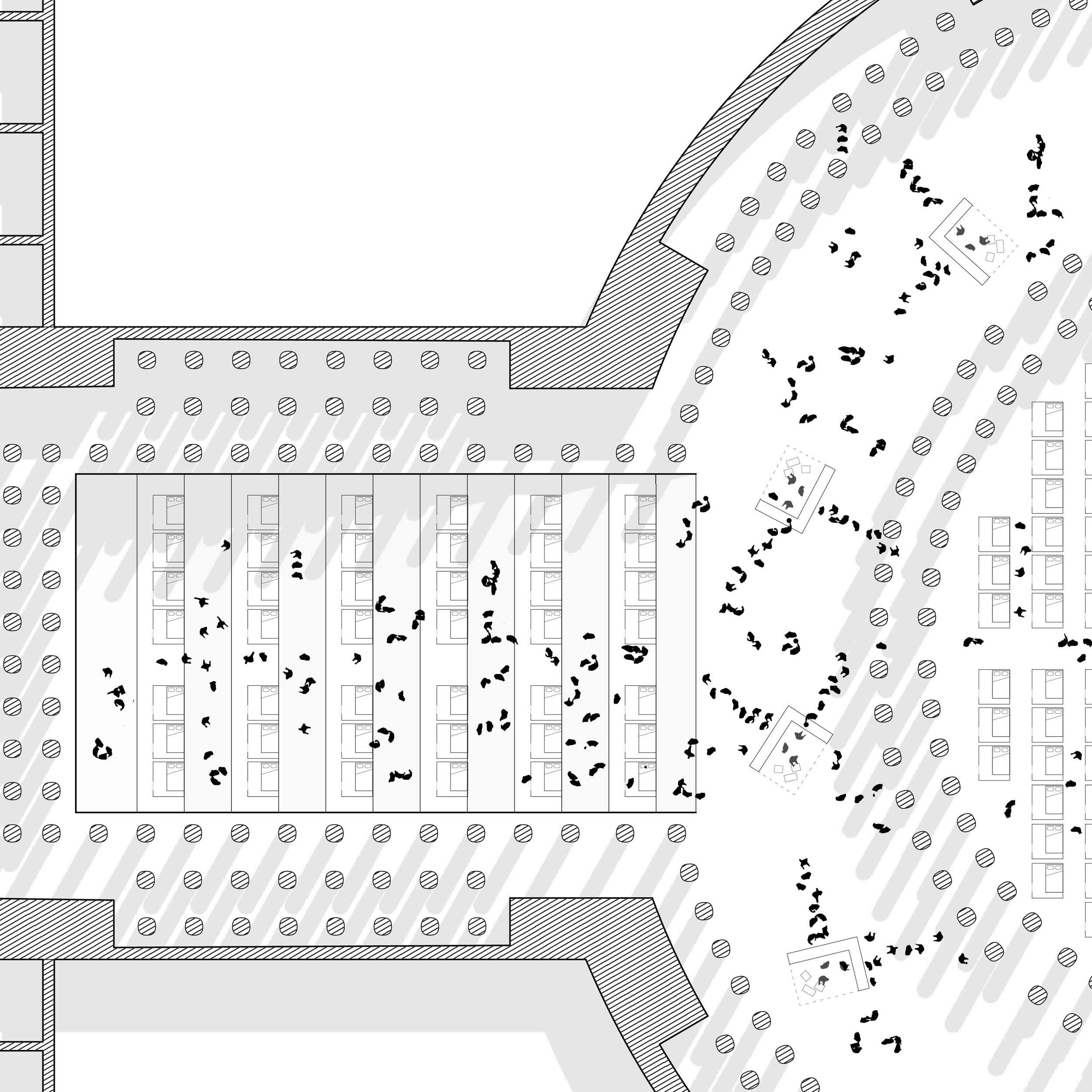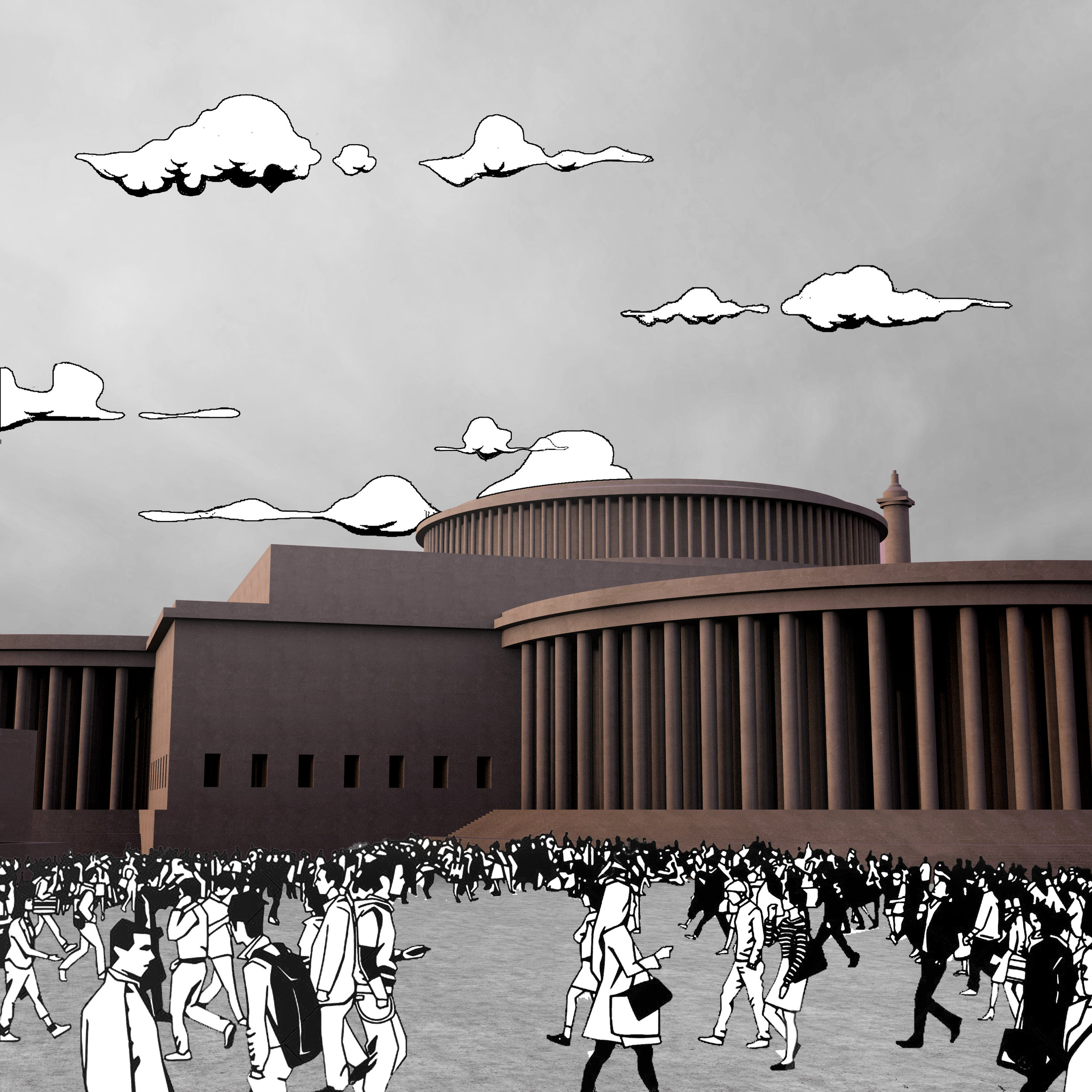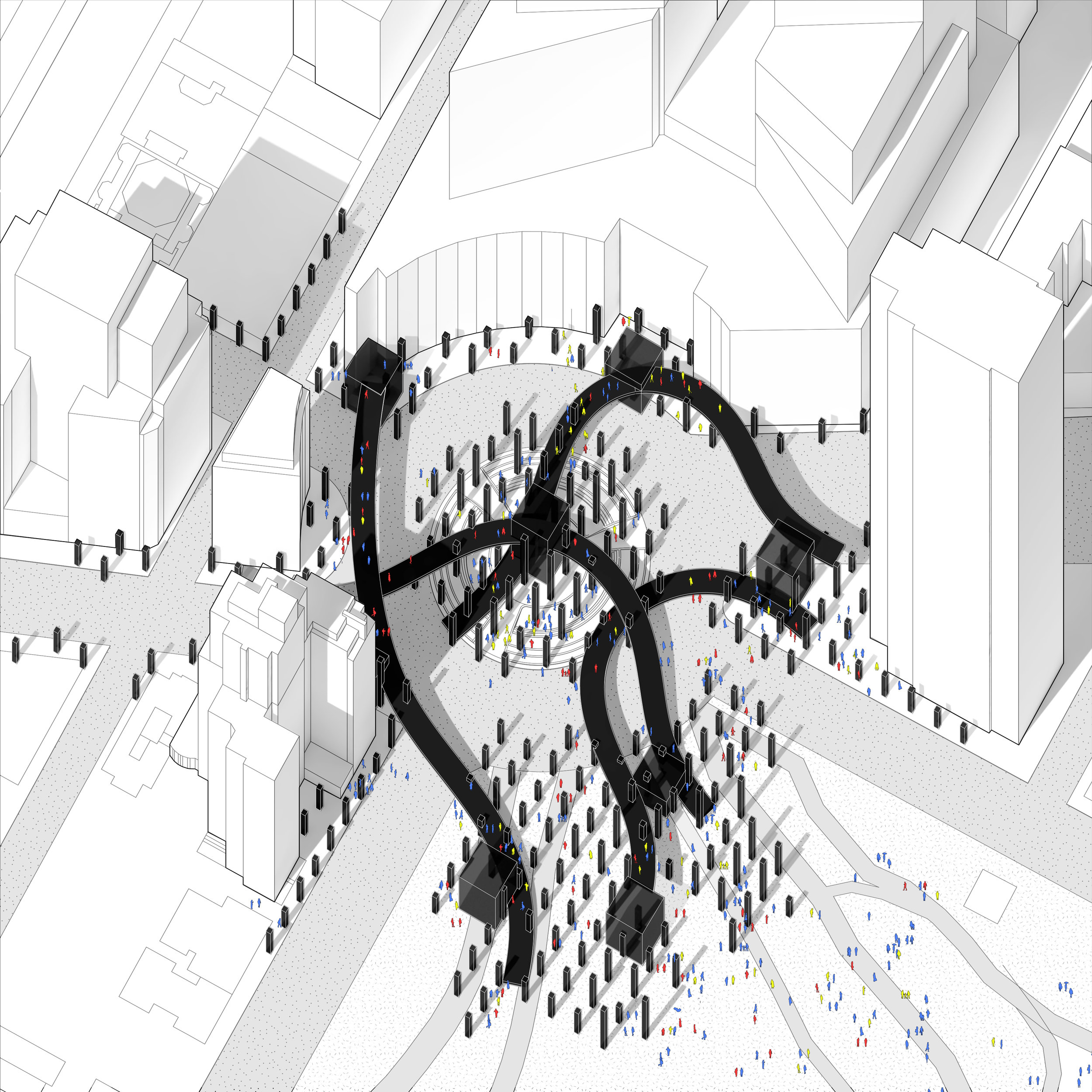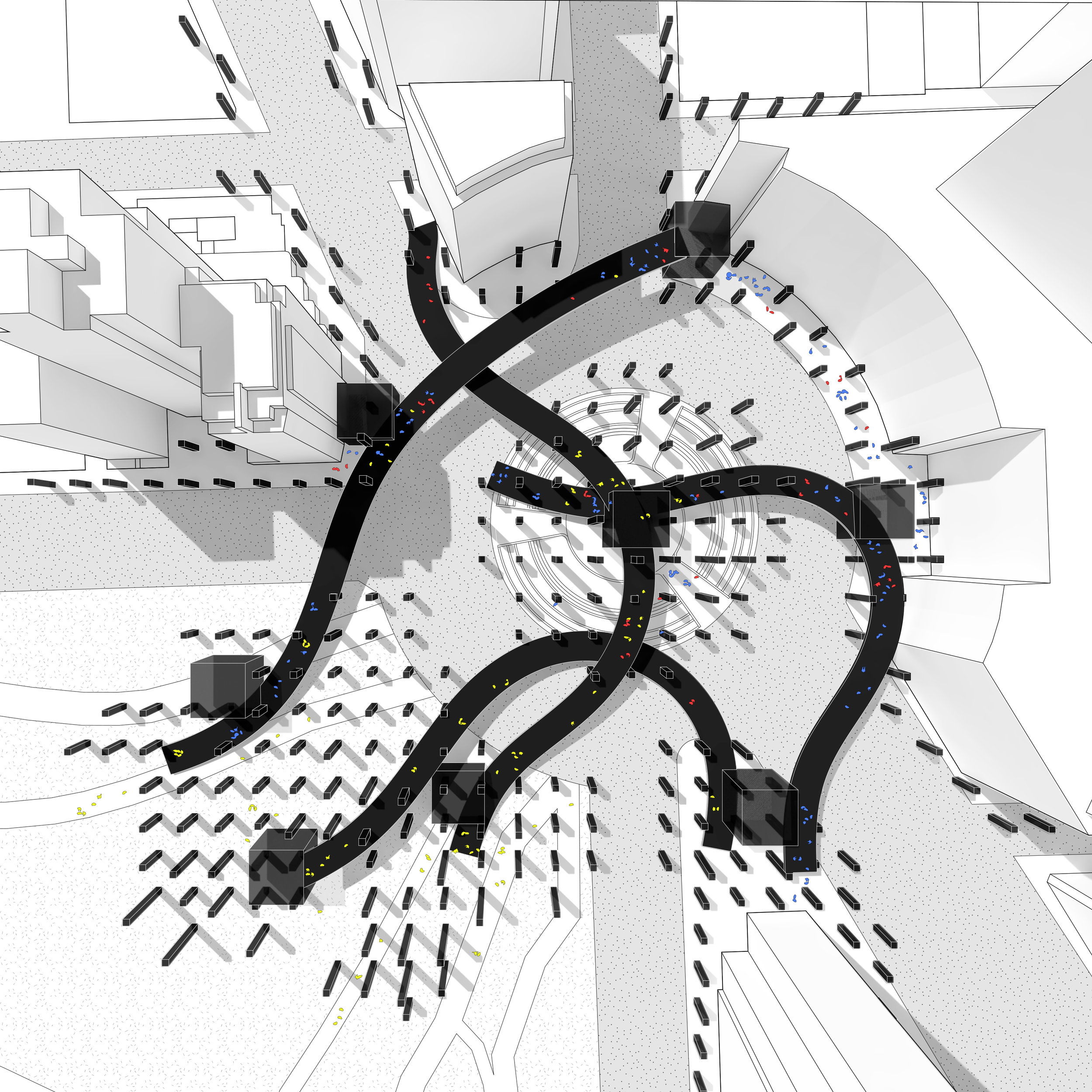1
2
3
4
5





A collection of work as part of an elective class lead by Lindsay Harkema meant to contribute to her ongoing research about Spaces of Exception.
DESCRIPTION
This project was part of an elective class lead by Lindsay Harkema and is meant to contribute to her ongoing research about Spaces of Exception. This intervention specifically hinges on the concepts of monument and camp to deconstruct the formal organization of Columbus Circle and diminish the negative iconicity of the central statue. The project looked at Boullee’s Museum as an example of a monument that uses repetition and large multi-use spaces to set itself apart from the negative system of Parisian roads and city planning at the time. The intervention similarly attempts to do this through the excessive repetition of black columns that disrupt views and create a camp-like system of occupation; a place except from the surroundings but within the existing system. This disrupts the centralized circular geometry by creating a field condition within which everything else resides. Another precedent was investigated for its ability to transform unused open space; Raumlabor’s Spacebuster. This pop up space also introduced a new system of occupation within the existing context. This led to the use of meshed black boxes that allow for more specific programmatic occupation. One covers Columbus, thereby making the statue simply part of a group of objects, minimizing its importance in the area and the hierarchy of the space, while also setting apart areas within an area mostly used for circulation to differently inhabit and use space. Bridges were then introduced to allow more circulation options and further reduce the centrality of the area.
See the rest of the research at www.lindsayharkema.com/research/#/spaces-of-exception-1/